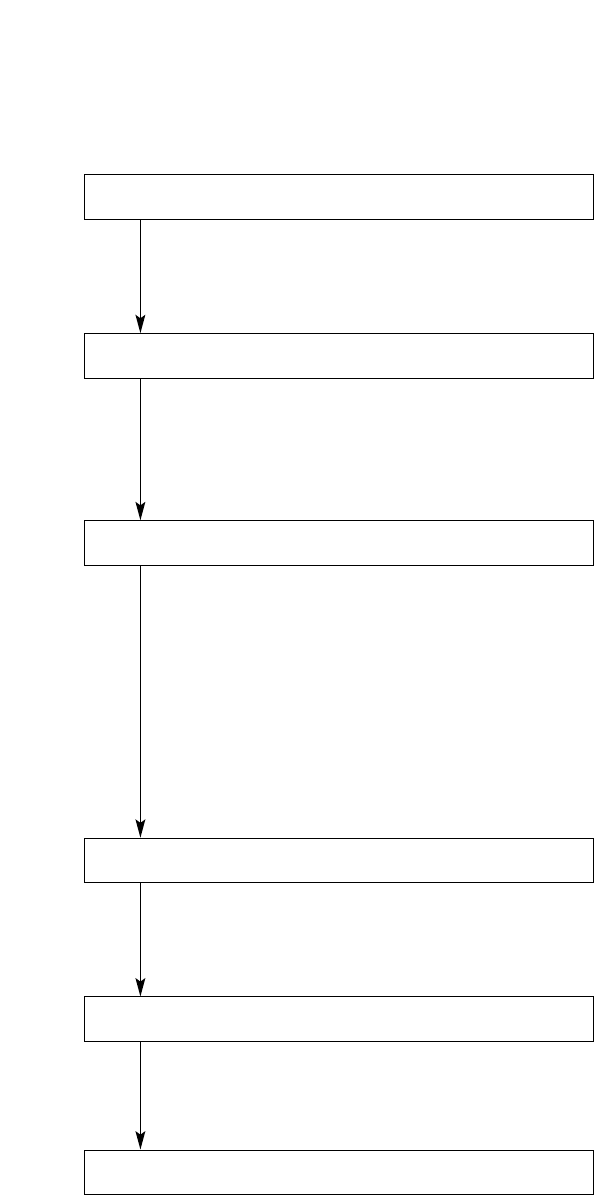
21
1. Design the system.
1.1. Determine the number of inputs and outputs.
1.2. Select modules.
2. Prepare equipment.
2.1. Mount modules. (Refer to p. 50.)
2.2. Check to confirm that the Mode switch is set to the matrix mode. (Refer to p. 15.)
2.3. Connect the power source to the unit using the power cord, then turn on the power switch.
3. Perform equipment settings.
3.1. Set the audio input. (Refer to p. 26.)
3.2. Set the audio output. (Refer to p. 27.)
3.3. Set the Event. (Refer to p. 28.)
3.4. Set the utility function. (Refer to p. 29.)
3.5. Perform preliminary settings for the adjustment function. (Refer to p. 31.)
3.6. Set the key lock function. (Refer to p. 32.)
3.7. Switch off the power. (Refer to p. 16.)
5. Adjust equipment at the site.
5.1. Switch on the power. (Refer to p. 16.)
5.2. Make adjustments while monitoring the sound. (Refer to p. 31.)
6. Operate the system.
• Activate set broadcast patterns through remote control. (Refer to p. 17.)
• Perform operation using the front panel-mounted keys and knobs. (Refer to p. 16.)
• Make paging calls. (Refer to p. 19.)
10. SYSTEM DESIGN-TO-OPERATION FLOW
Shown below is the flow from system design to its operation, which is used in the matrix mode.
4. Install equipment.
4.1. Mount equipment in a rack. (Refer to p. 52.)
4.2. Perform connections. (Refer to p. 53.)


















